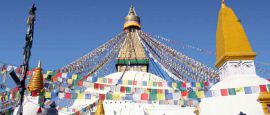Nepal History, Language and Culture
History of Nepal
Nepal's history is shaped by ancient kingdoms, trade routes and its strategic position between India and China. The Kathmandu Valley was home to powerful Newar city-states long before the modern nation took shape. In the 18th century, King Prithvi Narayan Shah unified these fragmented kingdoms, laying the foundations of contemporary Nepal. The country later served as a buffer between British India and Qing China, managing to retain its sovereignty while limiting foreign influence.
In the 20th century, Nepal moved from absolute monarchy to constitutional monarchy, and after a decade-long civil conflict, became a federal democratic republic in 2008. Today, Nepal is known for its religious harmony, living cultural traditions and strong sense of identity. For visitors, this history is visible everywhere, from ancient royal squares and temples to festivals and traditions that continue to thrive across the country.
Did you know?
• Nepal is home to eight of the world's fourteen highest mountains, including Mount Everest, yet its lowest point sits at just 59m above sea level, one of the greatest elevation ranges on Earth.
• The Nepalese calendar, known as Bikram Sambat, is approximately 56 years ahead of the Gregorian calendar. Festivals and official dates in Nepal often follow this local system.
• The Nepalese flag is the world's only non-rectangular national flag, made of two stacked triangular pennants symbolising the Himalayas and the country's Hindu–Buddhist heritage.
Language in Nepal
The official language of Nepal is Nepali, spoken as a first language by about 45% of the population. Other widely spoken languages include Maithili, Bhojpuri, Tharu and Tamang, reflecting the country's diverse ethnic landscape. English is commonly used in business, tourism and by those working in the travel industry.




 You know where
You know where